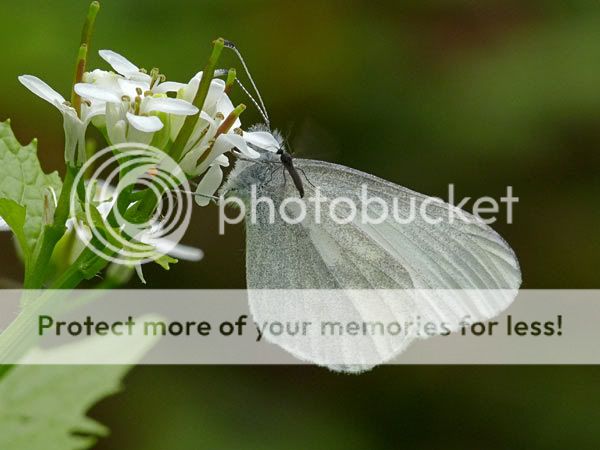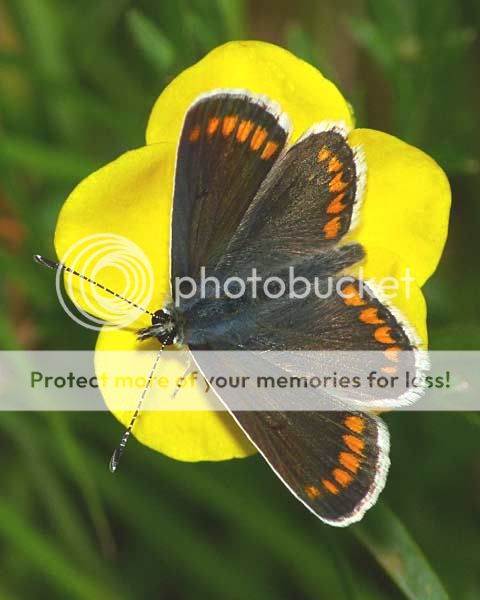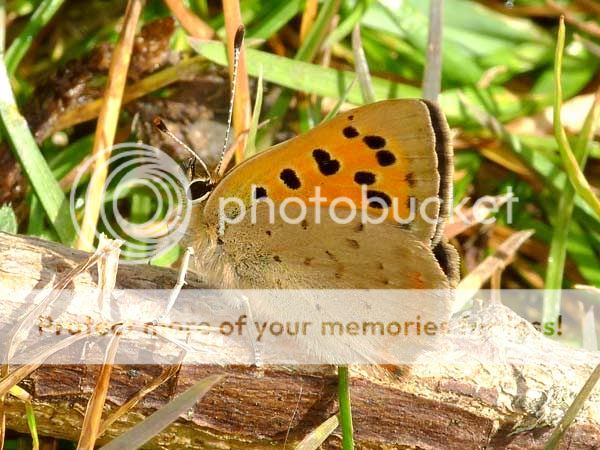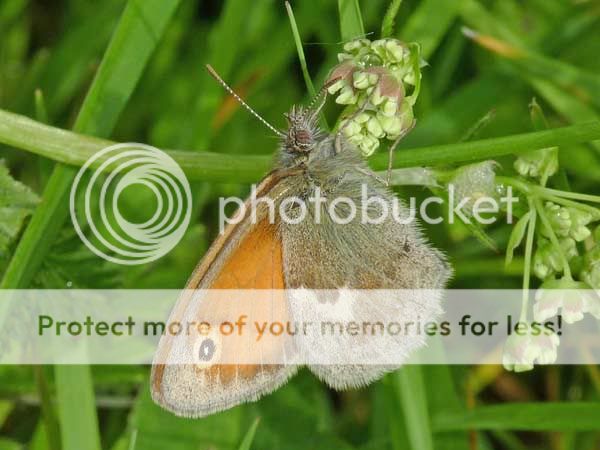Page 11 of 43
Re: Jack Harrison
Posted: Sun Apr 24, 2011 4:54 pm
by Jack Harrison
See you at TL206823 & TL207822. A bit more cloud tomorrow and not quite as warm - but that might be a bonus.
Jack
Re: Jack Harrison
Posted: Mon Apr 25, 2011 11:17 am
by Jack Harrison
Monday 25th April
Phil Bromley had followed up my hunch based on satellite images and turned up trumps on Sunday.
I met Rosalyn Payne and Phil today and we were all again impressed with the numbers of Grizzlies.

Phil kindly took this picture of an elderly retired Grizzled Skipper (rather craftily not showing my fat bits).

I returned the compliment.


Another gorgeous sunny day.
Jack
Re: Jack Harrison
Posted: Wed Apr 27, 2011 3:08 pm
by Jack Harrison
27 April
Haugh Wood south. Location as indicated earlier by David M. Many thanks, it saved a lot of searching for the hotspot although I was seeing PB Frits elsewhere. Numbers hard to estimate but 40+. The hotspot is about 300 metres to the west of Point 6 on the green butterfly trail.
6 - 8 Wood Whites were seen enjoying remarkably open habitats compared with say the Chiddingfold WWs (with which I am much more familiar). But I thought the numbers were disappointing and not a patch of the superb colonies in Chiddingfold.

What incredible eyes seen close-up

Wood White, friend and Orange Tip egg
Also numerous GV Whites, two Large Whites, usual Speckled Woods, single Peacock and single Small Copper. Overhead several Buzzards. But today I didn’t hear the (presumed) Ravens that yesterday had been croaking to each other. Kate Wollen, Conservation Ranger for the Forestry Commission in the West Midlands confirmed that several pairs of Ravens are present/breeding and added that they suspect but cannot confirm that Red Kites area also breeding. Kate and another forester I met were most enthusiastic about looking after the butterflies.
Haugh Wood is a superb example of how a wood should be managed for butterflies yet at the same time being a commercial forest.
Jack
Re: Jack Harrison
Posted: Thu Apr 28, 2011 4:20 pm
by Jack Harrison
28 April
I returned from Herefordshire to Cambs via Prestbury Hill and the Bill Smyllie reserve (Cotswolds). Weather was sunny, windy and cold at just 10°C. More in hope than expectation, I worked my way down the lee slope and this caught my eye. There seemed to be a well sheltered spot at the bottom of the path.

As I ventured further down the path, hopes rose as I approached the sheltered spot.

And there were two
Dukes. One posed beautifully and I got some adequate pictures – but we all know now what a Duke of Burgundy looks like.
St.Mark’s Flies were everywhere in countless numbers.
 EDIT I've just noticed another beastie in the picture (at the bottom) I have no idea what it is.
EDIT I've just noticed another beastie in the picture (at the bottom) I have no idea what it is.
I reckoned that as a minimum, there were 10 per square metre. With one hectare = 10,000 square metres, that made the St.Mark’s Fly density of 100,000 per hectare or 10 million per square kilometre. So there were a handful St.Mark’s Flies on Prestbury Hill today


Luckily they show no interest in humans.
Jack
Re: Jack Harrison
Posted: Thu Apr 28, 2011 8:03 pm
by Gibster
Hi Jack,
your mystery beastie is one of the
Phyllobius weevils. There are ten or so species in Britain, often abundant where they occur. The silvery green pubescence wears off as they age, leaving a rather bashed looking insect with bare patches.
I accidentally pootered one into my mouth once, and nearly died choking on it. Other than that they're considered harmless!

Gibster.
Re: Jack Harrison
Posted: Sat Apr 30, 2011 2:57 pm
by Charles Nicol
PhiliB wrote: it does look promising for Green Hairstreak but none seen today.
Phil
i went there this morning... plenty of Grizzled Skippers & 1 Green Hairstreak ( + loads of ants !! )
Charles
Re: Jack Harrison
Posted: Mon May 02, 2011 3:52 pm
by Jack Harrison
Monday 2nd May
Used the pubic car park near Mepal on Engine Bank. This is my “short and curly car”. (ref earlier part of this thread)

No Wall Browns there so I crossed the rivers but again no luck with any Walls. However the most productive area was the meadow at TL439811 just to the southwest of the Mepal pub, “The Three Pickerels”.

Here found first Common Blue of year (1, perhaps 2), first Brown Argus (1/2) Holly Blue (1), Small Copper (2) plus the usual whites.

Brown Argus
Jack
Re: Jack Harrison
Posted: Tue May 03, 2011 11:08 am
by Jack Harrison
Tuesday 3rd May
Nice garden tick this morning here in South Cambridgeshire – Brown Argus.
This isn’t a huge surprise as there is a reasonable colony about 500 metres away in an unimproved meadow. But that is cut-off from my garden by some quite tall trees. I would suspect however that some of my neighbours – many have large gardens – have some rough meadow-like grass instead of manicured lawns, and that is a more likely source for my BA.
Jack
Re: Jack Harrison
Posted: Sat May 07, 2011 2:16 pm
by Jack Harrison
5th May
Went via Seven Barrows near Lambourn Berkshire on way to Somerset. I don’t know if I was too early for the Marsh Fritillaries but I worry as this is fragile colony – last year I saw just one individual there. No luck with Marsh Frits this visit.
Two year ticks at Seven Barrows, Dingy Skipper (there were plenty) and a couple of Small Heaths.
I then went to Sand Point Weston super Mare with a nearby hotel booked for the night. The weather was windy and overcast although not cold. Just two Brown Argus.
6th May
I returned to Sand Paint and had just changed into walking boots when as arranged Zonda and his mate Chris arrived. This report repeats that on the Sand Point thread.
Sand Point was excellent – until I saw Zonda’s photographs when it really came home to me the difference between results from a DSLR and bridge camera. I will be further commenting on camera in the “"DSLRs v Bridge (compacts) - again" thread later but lots of other things to get on with today.
Sand Point is perfect for those of us carrying a little extra body weight; lots of exercise in a good cause. I weighed myself when I got back last evening as I was more that 2 kilograms lighter. Not a real loss of course – mainly de-hydration – but it made me feel good.
We (more correctly) Chris found the hot spot. To get there, opposite the car park, climb the steps and then the rough but easy enough (although steep) track to get to the top of the hill. Pass the seat (very usefully positioned!) and then continue along the crest of the hill. There is a likely looking open slope to the left but we didn’t explore that. Carry on past the concrete trig point and after about 150 metres you come to another open hillside with an obvious track going down towards a stile.
(And yes that is the correct spelling, not style, but I admit to having to look that up). Stay on the track and in the general area of the stile and fence seems to be a hotspot.
Picture show Chris pointing from the crest of the hill down the slope.

Getting back up the hill is challenging as Zonda demonstrates.

There is possibly a short cut from the car park area which reduces the amount of climbing and descending.
Apart from the 6 to 10 Glanvilles seen (all pristine on 6th so doubtless many more yet to emerge over the coming days) Sand Point positively teemed with Common Blues and Brown Argus. We MIGHT have seen a Small Blue in flight – it didn’t settle before we lost it - but they are difficult to distinguish from small Brown Argus when flying, so only a possible. Also several Small Coppers and a Wall Brown around the old earthworks at the top.
I had stayed overnight in the Commodore Hotel at Kewstoke, just a couple of miles away. Very reasonable price. I thoroughly recommend it. Excellent beer, marvellous carvery in the evening and superb breakfast. The bedroom was comfortable although I do have to say that this sign could result in some unfortunate consequences if taken too literally.

Jack
Re: Jack Harrison
Posted: Sun May 08, 2011 11:22 am
by Jack Harrison
8th May
Had a splendid 1.30 hours this in my local meadows in South Cambridgeshire. The trivial amount of overnight rain had clearly triggered a mass emergence. At one point I was almost tripping over Small Heaths (but this is always a good locality). Brown Argus in excellent number for the species. Two Common Blues seen (clearly a little later emerging here than elsewhere) and two sparring Small Coppers – normally quite a scarce butterfly in the meadows and orchards and not seen every year.

Note the nice in-focus distracting background in the Copper shot, typical of Box Brownies

. But also note that both antennae are sharp.


As a background chorus, Blackcaps out-competing each other, Chiffchaff, mewing Buzzard, Turtle Dove plus some vintage aircraft from nearby Duxford. High flying Boeings and Airbus kept up the professional interest.
This part of the meadow wasn’t productive for butterflies as was only to be expected. But it was picturesque and the aroma of the Cow Parsley was quite heady.

Jack
Re: Jack Harrison
Posted: Sun May 08, 2011 2:32 pm
by Neil Freeman
I love the shot of the Small Heath Jack.
I have seen a few around so far this year but for me they always seem to settle against a background where they blend in.
I know this is what they are supposed to do, natural camouflage and all that, but just wish that one would show me a bit of consideration occassionally

Cheers,
Neil.
Re: Jack Harrison
Posted: Mon May 09, 2011 2:48 pm
by Jack Harrison
9th May - Sad and happy
I was having a coffee outside in the garden when a male Orange Tip landed. Millie the cat was lurking unseen in the bushes and pounced. Bye bye Orange Tip.
Then on checking my captive stock, I found that a male Orange Tip had just emerged. So he was let go high in a shrub; the cat didn’t find him.
Jack
Re: Jack Harrison
Posted: Tue May 10, 2011 4:07 pm
by Jack Harrison
10th May
Bowles Mauve wallflower works its magic again.

Jack
Re: Jack Harrison
Posted: Thu May 12, 2011 5:08 pm
by Jack Harrison
12th May
Swallowtail hunt today. First visit was to How Hill where just one fly-by seen. These Egyptian Geese with four goslings were incredibly tame.
 When I chatted to the ranger about the extraordinary habit that Egyptian Geese have of perching in trees, he replied in his best Norfolk accent that they sometimes:
When I chatted to the ranger about the extraordinary habit that Egyptian Geese have of perching in trees, he replied in his best Norfolk accent that they sometimes:
“land on the boathouse roof”. Now in Norfolk, “roof” rhymes with “woof” or “poof” and not as per more standard English with “hoof”.
Then to Strumpshaw for the guaranteed Swallowtail “fix”. A small meadow with Red Campion just off the track towards Dr.George’s Swallowtail garden was best with perhaps as many as eight seen. Four or five others seen elsewhere in/near the reserve. No photos. Spent an hour or so with Gibster and Sam who called in on their way to Cley for a bird twitch.
Jack
Re: Jack Harrison
Posted: Fri May 13, 2011 1:39 am
by Gibster
Hi again Jack, must say it was a real pleasure bumping into you today. I think Sami may be quite smitten with your cheeky but gentlemanly ways!

We utterly failed with the Great Snipe, bloody thing. But a surprise Lesser Yellowlegs across the marsh was a decent bonus. Check the time of this post...we arrived back home all of 5 minutes ago...
Take care,
Seth and Sami.
EDIT - The time on this site is an hour out, it's currently
2:40am!
Re: Jack Harrison
Posted: Fri May 13, 2011 4:59 am
by Jack Harrison
I think Sami may be quite smitten with your cheeky but gentlemanly ways!

Ah, another member of my growing female fan base. But when I told my wife about your comments, she wanted it to be known that after she has heard one of my anecdotes for the 200th time, there is a tendency to yawn! I have no idea what she means by that.......
Some years ago I was at Thornton (I think it was) and saw this Redshank with strange coloured legs. I didn't know there was a Lesser Yellowlegs in the area and was a little surprised to have its identity pointed out to me.
Jack
Re: Jack Harrison
Posted: Fri May 13, 2011 6:58 am
by Pete Eeles
Gibster wrote:EDIT - The time on this site is an hour out, it's currently 2:40am!
You have to change that in your user settings -> board preferences (set BST); it doesn't do this automatically, unfortunately.
Cheers,
- Pete
Re: Jack Harrison
Posted: Fri May 13, 2011 10:45 am
by Jack Harrison
13th May – Red Admiral experiment
I tried this experiment yesterday at Strumpshaw but got sidetracked. The experiment was concluded more successfully today.
The aim was to determine the origin of our Red Admirals. So I have been humming some National Anthems to see which ones produce a response from the butterfly.
“God Save the Queen” produced no excitement whatsoever (but it doesn’t to me either)
"Deutschland, Deutschland über alles" was ignored.
However "La Marseillaise" did the trick. It opened its wings and thought of France.
So there we are. Origin of our Red Admirals solved.
Jack
Re: Jack Harrison
Posted: Sat May 14, 2011 1:17 pm
by Jack Harrison
14th May
My elder son has just started training as a pilot.
http://www.youtube.com/watch?v=HZgo2puA7RY
He clearly has a bit to learn from his old dad.
(Don't fly under the influence).
Jack
Re: Jack Harrison
Posted: Sat May 14, 2011 2:41 pm
by Padfield
After your previous post, Jack, about patriotic butterflies, I guess I'm supposed to respond to the William Tell Overture in the background of that movie!
Guy from CH





















